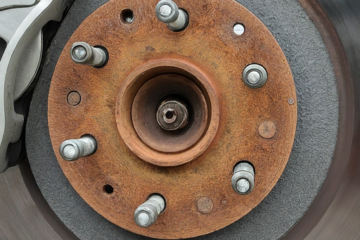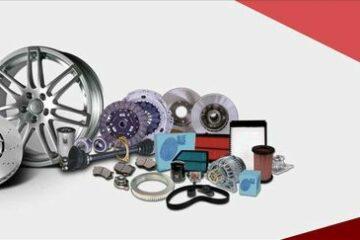Winter is coming, and that means it’s time to prepare your car for the cold weather. The cold weather, snow, and ice can all take a toll on your vehicle, but there are things you can do to keep it running smoothly and safely all winter long.
In this comprehensive guide, we’ll cover everything you need to know about winterizing your car, from getting a tune-up to switching to winter tires. We’ll also give you tips on how to drive safely in winter conditions.
So whether you’re a seasoned winter driver or you’re new to the cold, read on to learn how to keep your car safe and sound all winter long.
How to Prepare Your Car for Winter: A Comprehensive Guide
Although winter is a lovely season, your car may suffer the most during this time. There are several difficulties for drivers when it’s cold outside, such as ice roads and snowstorms. It’s imperative that you properly prepare your automobile for winter driving in order to guarantee both the safety of yourself and your vehicle. We will go over several important pointers and strategies in this in-depth guide to help you prepare your car for winter driving and drive with assurance.
Here is a comprehensive guide to winterizing your car:
1. Get a winter tune-up. This is a good time to have your oil changed, your fluids checked, and your battery tested. You should also have your tires inspected and make sure they are properly inflated.
2. Switch to winter tires. A set of winter tires is one of the most important investments you can make for winter driving. Winter tires, as opposed to all-season tires, are specifically intended to provide superior traction on ice and snowy roads. Learn about the advantages of winter tires and why they are so important for your safety.
3. Keep your gas tank full. At least half full. This will help prevent your fuel line from freezing.
4. Fluid Checks and Changes: Keeping Your Engine Happy Learn about the importance of checking and maintaining essential fluids like engine oil, coolant, and windshield washer fluid during winter. Understand how cold temperatures can affect these fluids and what you can do to keep your engine running smoothly. Use winter-grade windshield wiper fluid. Summer washer fluid can freeze in cold weather, so it’s important to switch to a winter-grade fluid.
5. Clear your car of snow and ice before driving. This includes your roof, hood, and trunk. Snow and ice can fly off your car and hit other vehicles, so it’s important to clear them away before you drive.
6. Visibility Matters: Wipers, Lights, and Defrosting Proper visibility is critical for safe winter driving. Learn about maintaining your windshield wipers, ensuring all lights are functioning, and effectively defrosting your car. Clear visibility can prevent accidents and keep you and others safe on the road.
7. Be careful when driving in winter conditions. Allow extra time to get to your destination and leave plenty of space between you and the car in front of you. Avoid sudden braking and accelerating.
8. The Role of Antifreeze: Preventing Engine Freezing: Antifreeze, often known as coolant, is an essential component of your vehicle’s winter defense. Learn how antifreeze works, why it’s important, and how to check and top it off if necessary. With the proper antifreeze combination, you can keep your engine from freezing and costly repairs.
9. Emergency Preparedness: Packing a Winter Survival Kit : Being ready for emergencies is essential for winter driving safety. Learn what supplies you should include in your winter survival pack, including blankets, snacks, a flashlight, and a shovel. Learn how these items can make a big impact if you become stuck in the snow.
10. Brakes: Your Best Friends in Slippery Conditions : In particular during the winter, your brakes are essential to your safety. Recognize the warning indications of brake problems, such as odd noises or decreased stopping power, and know when to have your brakes checked out and fixed. Your best line of protection against collisions on ice roads is a set of properly operating brakes.
11. Driving Tips for Winter: Navigating Icy Roads : Discover crucial winter driving techniques such as lowering your driving speed, maintaining a safe following distance, and understanding how to deal with skidding. Driving with awareness and caution can considerably lower the chance of an accident in winter conditions.
In addition to the above tips, here are some other things you can do to prepare your car for winter:
- Check your coolant level. Make sure your coolant is at the proper level and that it is the correct type for your car.
- Test your brakes. Make sure your brakes are in good working order and that your brake pads are not worn too thin.
- Inspect your hoses and belts. Look for any cracks or signs of wear and tear. Replace any damaged hoses or belts immediately.
- Top off your fluids. Make sure all of your fluids, such as your oil, transmission fluid, and coolant, are at the proper level.
- Lubricate your locks and hinges. This will help to prevent them from freezing.
- Wash your car regularly. This will help to remove any salt or other corrosive materials that could damage your car’s paint.
Conclusion:
Winter driving doesn’t have to be daunting if you prepare your car adequately and follow safe driving practices. By investing time and effort into winterizing your vehicle and educating yourself about winter driving techniques, you can enjoy the season’s beauty while ensuring your safety and the well-being of your car. Stay safe, stay warm, and happy winter driving!




